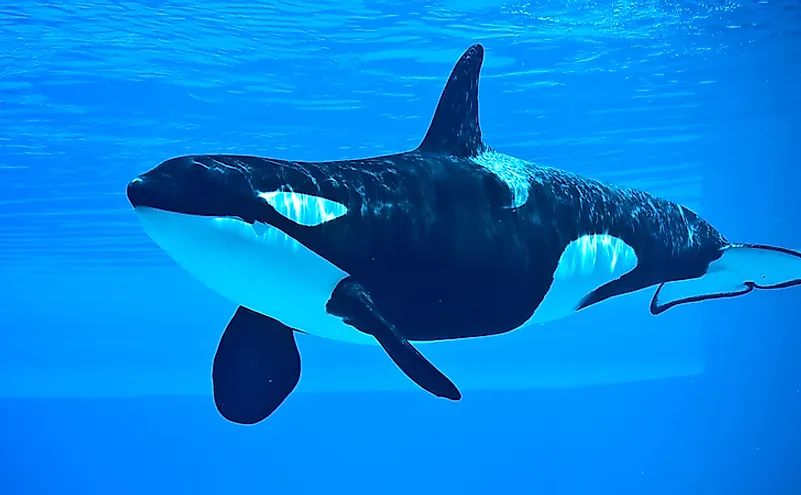What Does A Killer Whale Eat?

The killer whale, also known as the orca, is the largest of the dolphin family. It is a highly social mammal that lives in a pod of matrilineal members. The IUCN does not define the conservation status of the killer whale due to data deficiency, but some populations are considered endangered or threatened due to depletion of prey, habitat loss, pollution, and conflict with human fisheries. Killer whales do not actively hunt humans, but captive orcas are known to kill or injure their handlers at marine parks.
What Does A Killer Whale Eat?
Killer whales are carnivorous, so their full-time diet consists of meat. Since they inhabit a diverse ecosystem, their eating habits vary depending on the geographical area. Their diet ranges from small fish, seals, sea lions, rays, sea otters, turtles, dolphins, and baleen whales. Killer whales are powerful predators that are not intimidated by large animals and are capable of attacking sharks. The resident North Pacific population feeds on salmon, particularly king and chinook salmons, while the transient orcas inhabiting the same waters prefer marine mammals such as elephant seals, harbor seals, porpoises, sea lions, and minke whales. In Norwegian waters, they go after large schools of fish, especially herring. Those in New Zealand waters prefer sharks and rays while Antarctic population feeds on seals, minke whales, and local fish.
Hunting Strategies Of A Killer Whale
The killer whale is an apex predator that hunts without fear of being hunted. It exhibits various hunting strategies taking advantage of anatomy, strength, social behavior, and intelligence. Each prey requires a different approach depending on the size, ability to fight back, and elusiveness. Orcas targeting schools of herring work together to create confusion by coordinating their movement and hitting the fish with their fin tails. When targeting marine mammals, orcas use their tails to hit and stun the animal or use their head to throw it into the air before delivering a fatal bite. Large mammals such as baleen whales are more difficult to kill and require several individuals to take down calves or weak individuals. Once the target is established, the orcas isolate it from others and chase it to exhaustion. They then suffocate the whale by pinning it below the water. The strategy is also used to hunt dolphins. When hunting sea lions, sea elephants, and seals along the shallow coast, the orcas approach the shore and launch a sudden attack. Orcas also target prey resting on floating ice floes and work together to push the floes deeper into the ocean before breaking it using their tails and heads to reach the prey. Killer whales have four rows of between 10-12 teeth, which they use to grasp and tear large prey. They do not chew but instead swallow large chunks of flesh and small fish.











